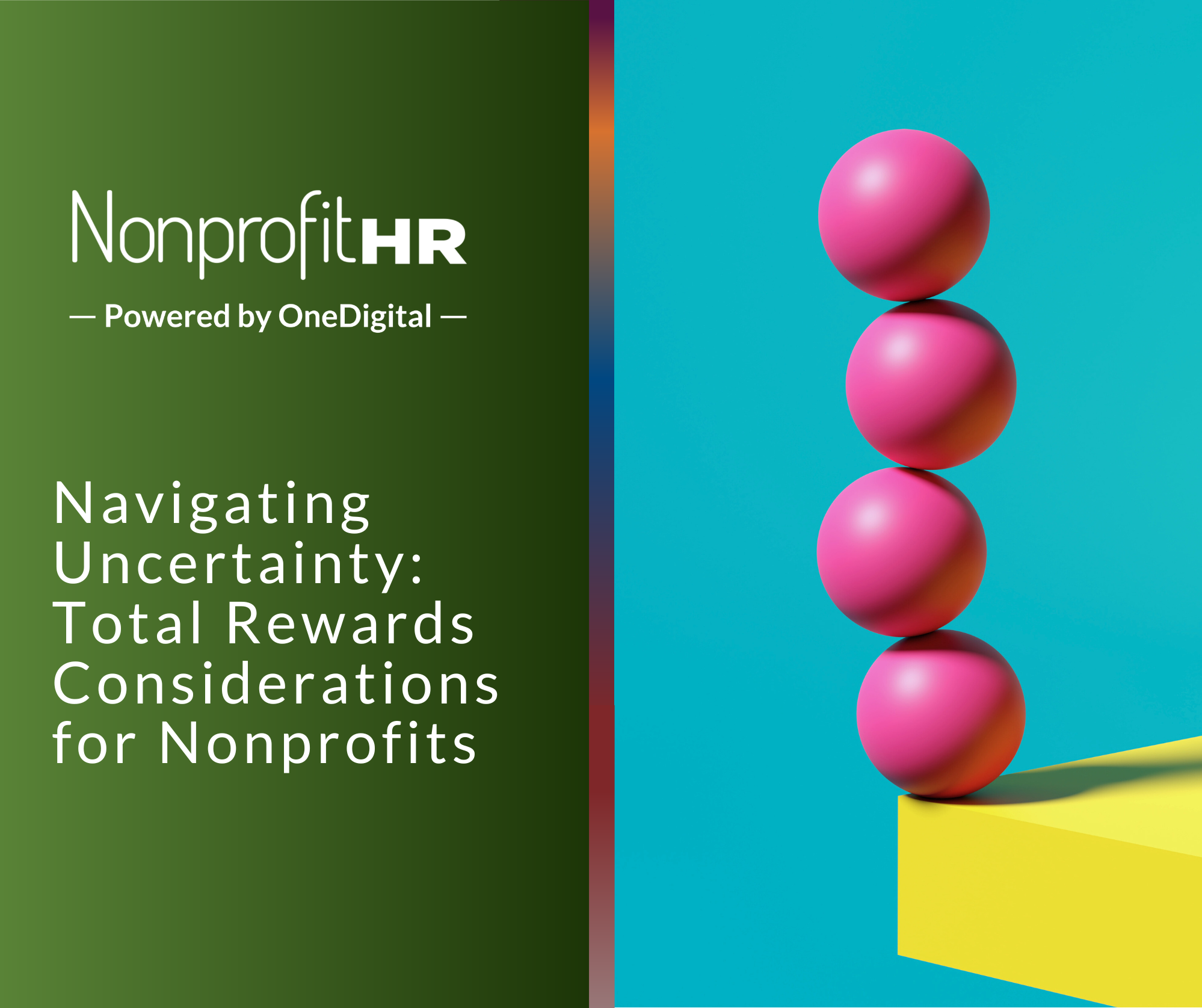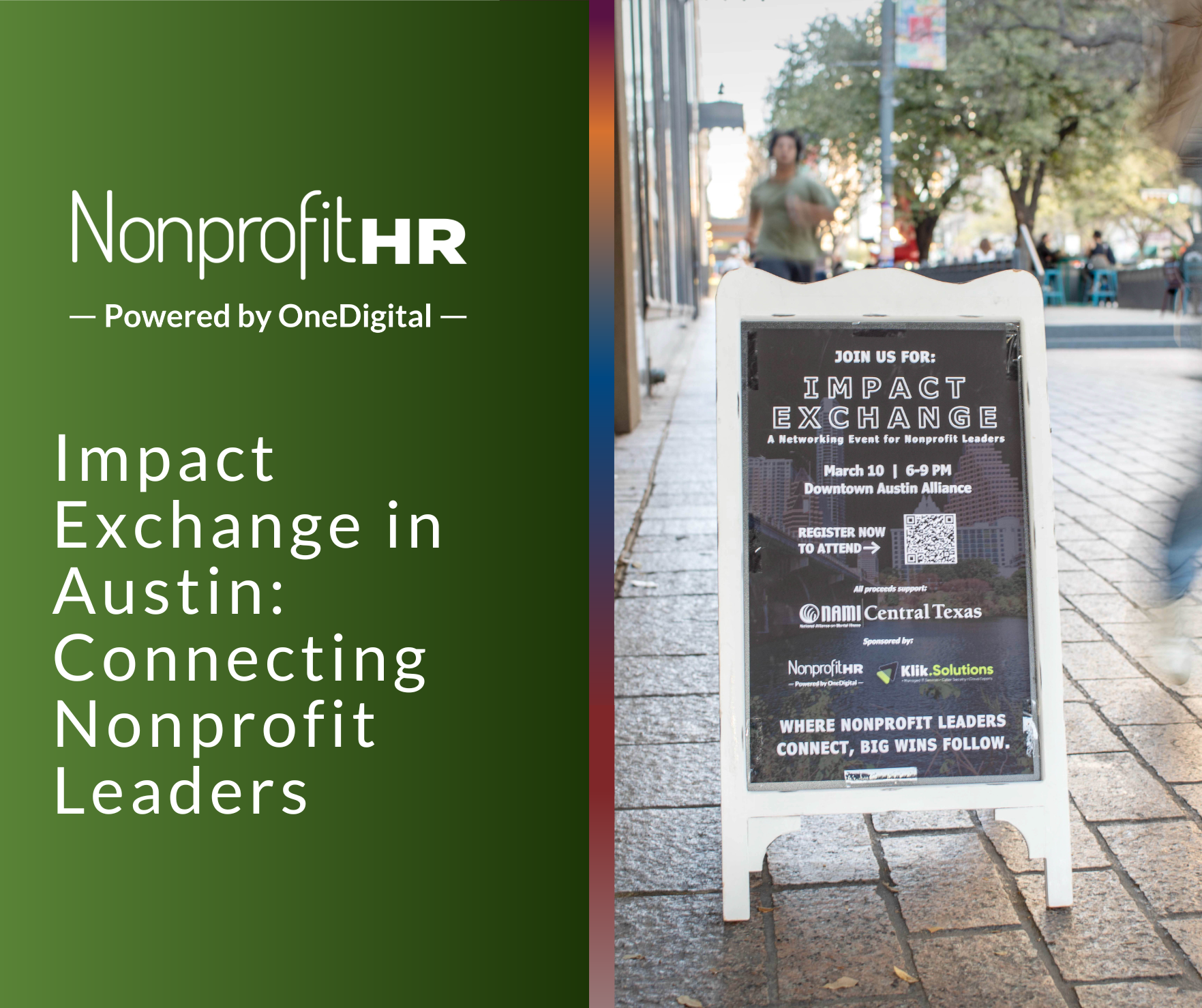WTOP: 5 ways nonprofits can…
In Part 1 of this series, we walk through the what, why and when to conduct HR assessments to optimize HR and drive organizational advancement. In Part 2, our expert Strategy & Advisory consultants guide us through the logistics and key components of HR assessments.
HR assessments are comprehensive strategic examinations of your organization’s HR services and delve into the core aspects of your workplace policies, programs and practices, focusing on seven critical areas: compliance, equity, program quality, total rewards and compensation, talent acquisition and management, performance development and learning, and HR systems, processes and analytics.
An HR assessment — driven by data analytics to inform decision making at the leadership level — should reveal three key things:
- Strategic and Operational Capacity: Offers insights into your HR function’s current state and its alignment with your organization’s overall goals. This area distinguishes between a strategic approach (current HR) and a transactional one (legacy, HR 20 years ago), highlighting the importance of staying current with HR trends.
- Program Efficiency and Efficacy: Evaluates how effectively your HR programs contribute to your organization’s mission, impact and reach. It also reveals the impact of HR tech on your organization such as AI’s influence on efficiency. The pandemic underscored the need for HR readiness, making an HR assessment a valuable tool for ensuring your organization is prepared for future challenges. It tests your organizational agility and resilience by scrutinizing potential factors that could impact your organization.
- Organizational Alignment: Determines whether HR has a prominent role within your organization and how it is strategically involved in empowering employees, by ensuring that it is integrated into your organization’s core operations and decisions.
Mechanics of an HR Assessment
This section explores the dynamics of an HR assessment, emphasizing the importance of inquiry, evaluation and alignment between HR strategy and organizational goals.
Peeling Back the Onion: Assess Core HR Functional Areas
HR assessments are journeys of inquiry and evaluation, requiring stakeholders to probe the organization’s goals and potentially step out of their comfort zones as they address challenging questions. The leap of faith unlocks insights into the HR function, enabling alignment with organizational goals. Just how involved is HR in each strategic area? Uncovering workflow gaps and challenges hinges on getting a clear picture of their current involvement. This technique is significant given the high prevalence of HR burnout, with 42% of HR teams struggling in 2023.
Strategic Future Focus: A Forward-Looking View of HR
According to 2023 HR trends, 43% of HR leaders report that they don’t have an explicit future of work strategy. HR assessments offer roadmaps to streamline HR processes that support the organization efficiently, synergizing HR strategy with the future. Detailed recommendations provide a strategic framework for future success, sustainment and growth.
Unlocking Your Assessment Potential: From Kick-Off to Reporting
Ready to navigate the HR assessment process? We now present the key components, why they matter and how they lead to impactful results. This concise roadmap will guide you on your journey to a thriving HR function.
Project Kick-Off: Comprehensive discussions with your team enable you to understand your HR assessment needs and objectives. Is your HR function hitting roadblocks? Identify the challenges and pain points prompting your HR assessment and consider why you may want to partner with third-party support, setting the stage for a laser-focused assessment.
Data Collection: The systematic gathering of comprehensive data and essential documentation is the bedrock of your assessment, allowing for a clear and well-defined project scope. A checklist of documents, such as those Nonprofit HR uses in our engagements, can help you identify needs you may have yet to consider.
Discovery: Delving into existing documentation and actively seeking feedback from organizational stakeholders — including HR and non-HR leadership, management, and staff — paints a comprehensive picture of HR’s role and shapes a holistic understanding of your organizational landscape.
Analysis: Applying industry best analytical practices on the data and metrics gathered during discovery identifies and predicts gaps and challenges within your HR practice. These insights will inform tailored recommendations that address areas needing improvement while harnessing and reinforcing existing strengths.
Reporting: Culminate your assessment with a data-driven report that’s more than just numbers and charts. The report should illuminate key findings, prioritize action areas and offer actionable recommendations to fuel long-term decisions and spark transformative change. By establishing clear success metrics and implementing ongoing monitoring mechanisms, you’ll track progress and ensure your HR journey stays on course.
Maximizing the Impact of HR Assessments
As we explore the critical steps of an HR assessment, let’s cover all bases to drive positive organizational change. While numerous models and approaches exist, we’ll focus on a proven method that delivers results.
Proceed with Urgency: Some organizations don’t take action after assessments. They shelve the findings and by the time they revisit them, they’ve already lost momentum. Knowing is not enough. It is best to take immediate action.
Review, Prioritize and Act: By immersing yourself in the assessment report and absorbing its findings, recommendations and opportunities, you’ll identify quick wins and low-hanging fruit for immediate remediation. You’ll also learn how to prioritize intricate, long-term initiatives that require careful planning. Assigning team members to different focus areas fosters skill development.
Facilitate Communication and Transparency: By sharing findings and action plans with stakeholders, you can ensure that your goals and strategies are aligned, while eliciting additional insights or concerns. Transparency about organization-wide commitment to improvement is essential for success. Remember: Findings are not indictments against individuals or HR. Rather, they provide blueprints for advancement.
Monitor and Measure Progress: Crafting a detailed action plan is essential, but involving your HR team and stakeholders is the sugar on top. Collaboration ensures ownership, alignment with strategic direction and timely execution. Teamwork is critical for fine-tuning priorities and synchronizing HR with your organization’s strategic direction. Don’t let progress slip through the cracks! Setting clear deadlines and scheduling regular check-ins, coupled with a data-driven approach to measuring success, ensures everyone stays on track and your HR initiatives remain focused on achieving tangible results.
Document Actions: In HR, the saying, “If it’s not documented, it didn’t happen,” holds. Meticulous documentation provides nonprofit and association leaders with a record of their organization’s assessment, creating a basis for informed decision making. Documentation gives leaders a transparent narrative of momentum to build trust and foster alignment. It’s not just about what happened; it’s about what’s next.
Practice Continuous Improvement: Relentless external forces — evolving economic conditions, employment laws and regulatory landscapes — demand that HR professionals resolutely commit to continuous improvement. Embracing this imperative empowers agile adoption of HR programs and services to keep pace with the ever-changing social sector landscape.
Safeguard Legal and Ethical Compliance: Paying close attention to risk liability and compliance issues unravels ways to enhance compliance, especially in light of the current hybrid work landscape and ever-evolving legal framework. Consider the positive potential of ethical programs and services. You’ll champion a socially responsible workplace by guaranteeing alignment with diversity, equity and inclusion principles.
Conclusion
The HR assessment lays a foundation for stabilizing and growing the organization. It is a powerful tool to inform about opportunity areas and viable solutions for implementation. Assessments benefit from combining trends in HR and the social sector, industry best practices, and the knowledge and expertise of HR and non-HR teams. Embrace HR assessments as critical tools for driving positive change and ensuring alignment with your mission. Stay ahead of the curve by adopting future-focused strategies that leverage insights from the ever-evolving HR landscape.
We tailor Nonprofit HR assessments to the specific needs of social sector organizations, accounting for the unique challenges and opportunities they face. We use various data collection methods, including employee surveys, interviews and focus groups, to get a complete, vivid picture of your organization’s HR strengths and weaknesses. Interested in learning more? Schedule a mini consult today!
Contributing Authors
|
Shelbie Webster
Senior Consultant,
Strategy & Advisory
|
Suana Watson
Consultant,
Strategy & Advisory
|































